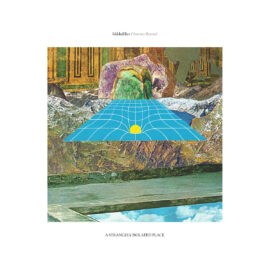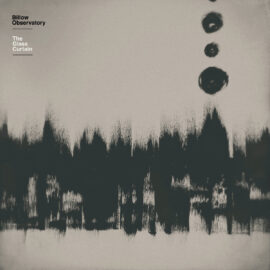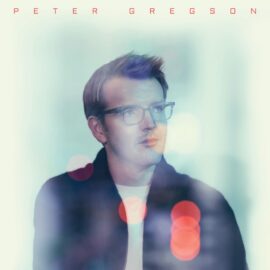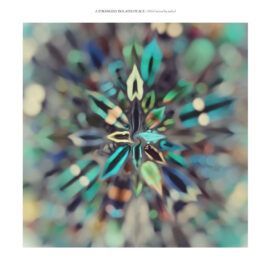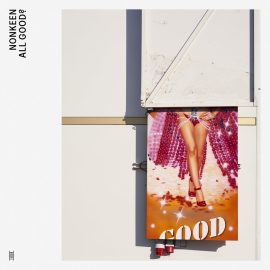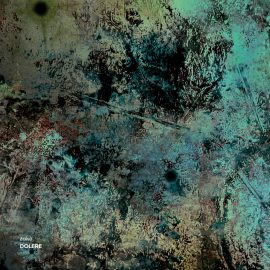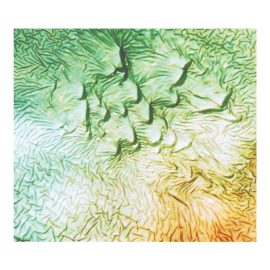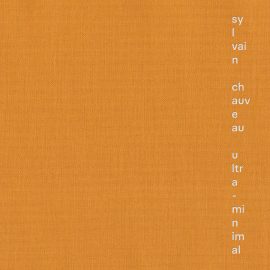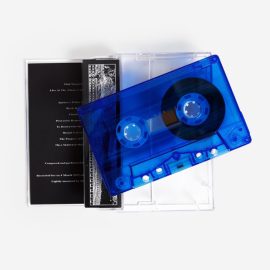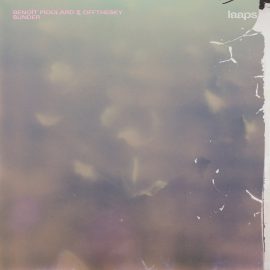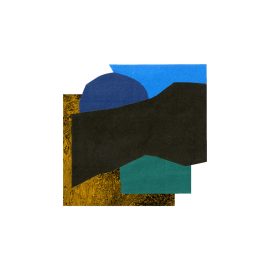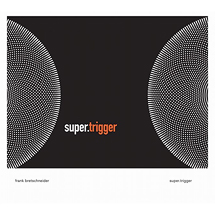 Frank Bretschneider Super.Trigger Raster-Noton Frank Bretschneider does a complete 180° from his last album, Kippschwingungen, released not long ago on Line, for this latest outing on his own Raster-Noton label. Exploring his repertoire, Bretschneider often seems to veer sharply from the rhythmic to the purely abstract, though he does occasionally land in the middle. Super.Trigger is by nature a rhythmic album, with a liveliness and spirit that is nowhere to be found on Kippschwingungen or his older Mille Plateaux albums, all of which are quite good in their own right but much more staid and severe. Instead, the playful spirit of his 2010 album EXP or 2007’s Rhythm comes through loud and clear here. Highly detailed and syncopated sequences of drum samples, sliced and diced, skitter in and out of his signature glitch aesthetic. But I dare say, some of Super.Trigger is downright funky – a word I never thought I’d associate with Herr Bretschneider. “Over.Load” has a special swagger with its snippets of voices and tinny snares that bob in time, and “Flicker.Funk” has it right in its own name, with synth zips that are as close to a wah-wah guitar as anything on Raster-Noton is likely to get. “Machine.Gun” has a nice chunky broken beat groove to complement its skittering sequencing, probably my favorite of the bunch. Despite its playful nature, Super.Trigger falls right in line with Bretschneider’s tendency to focus on a sonic concept for an album; Rand was on the vanguard of the clicks and cuts trend, while EXP was a curious foray into free-jazz-tinged glitch. Super.Trigger shows off Bretschneider’s knack for rhythm deftly, one of my new favorites of the year. Be sure to read Interview with Frank Bretschneider going live tomorrow on Headphone Commute!
|
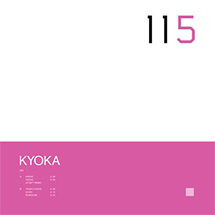 Kyoka Ish Raster-Noton Nice, heavy-handed set of noisy techno-esque electronic tracks here from Japanese artist Kyoka, produced by Frank Bretschneider… “Kyoka – the first solo female artist on the Raster-Noton roster works as a musician and composer in Berlin and Tokyo. She has been releasing music since 2008 and is known for her chaotic, direct approach and a heavy-rough sound resulting in a broken pop-beat with experimental yet danceable rhythms. Ish means “around”, “like” or “about” and reflects her way to be clear by being vague – brightness wrapped in a blanket of obscurity and abstractness.” The channel effects are crazy on opener “Hadue,” with the sound gated between left and right to cause strange shifts in sound continuously. Odd syncopation choices keep you guessing but it’s got enough momentum to keep you moving. Atom™ takes his masterful hand at a remix that follows immediately after, streamlining it and focusing on a more reliable groove with some tinges of acid and a clatter that sounds vaguely Wax Trax to me (but with 2012 production values). It’s probably the highlight of this EP, never letting up over the span of 9+ minutes until it suddenly stops with a resounding BOOM. The other originals are quite impressive — lots of editing and snippets of vocals, cascading effects, sampled percussion, crazy sequencing… none of it quite aligns with any trends or genre. It’s not surprising that they called in Uwe Schmidt to do a remix as I hear a good resemblance to some of his more scatterbrained aliases (Naturalist, Los Samplers), in spirit more than in actual sound of course. Very cool stuff, it’s nice to hear Raster-Noton and mainstay Bretschneider exploring more playful territory to complement their more staid, serious repertoire.
|
|
Pixel Mantle Raster-Noton Anyone who’s had a cellphone for more than a few years and works with audio or a computer with speakers knows that once upon a time it was nearly impossible to avoid picking up the sound of your phone’s signal with the network — a rhythmic, chugging, gritty digital sound not unlike that of a modem handshake (minus the noise blast). Mantle seems to harness that essence of digital communication and noise in ways that are alternately immersive and head-bobbing. Jon Egeskov’s fourth album as Pixel starts off with a digital sputter of noise. Without sounding too dismissive, because the album is solid, Pixel’s aesthetic is what I’d call “Raster-Noton by numbers.” All of the standard elements are there: white noise, crisp digital rhythm with staggered kicks, high-pitched bleeps, sine wave low-end bass bloops. But there are some really exciting moments here, like the sputtering staccato static that kicks off “Brown Shirt,” before it evolves into a rhythmic chugger that no doubt does his label bosses proud. Typically those more sparse and fragile moments are few and far between, but by virtue of how isolated they are, they stand out in a good way; the utter lack of reverb on many of the sounds gives it an immediate and claustrophobic feeling, as if the sounds are impossible to get away from. Along those lines, the breakdown in the center of “Nestling Screen” is a nice respite from the crowded noisetones of the rest of the track; its skittering, delicate rhythm, joined before long by a relentless drone of white noise on the surface, speaks to Egeskov’s knack for syncopation and contrast. While his toolkit and sonic palette don’t necessarily set Pixel so far apart from the Raster-Noton pack (Byetone, Alva Noto, and Frank Bretschneider, to name a few), he certainly has his finger on the same glitchy pulse. Ten years and four albums in, and there’s no doubt that he knows what he’s doing.
|
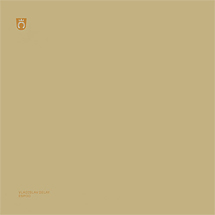 Vladislav Delay Espoo Raster-Noton “Olari,” the first track on this rather odd EP from Sasu Ripatti, starts off unassumingly enough with a sort of machine-gun like stuttering sample of synthesis, with what appears to be a double-time broken beat syncopation. But as is his wont, he confounds expectations by instead lurching into a disorienting, plodding 5/4 groove. It’s surprising and satisfying because he could’ve more easily just thrown down the 4/4 kick that the first minute or two begs for, but Vladislav Delay is not a project in which Ripatti has ever indulged the dancefloor (see Luomo, Sistol or Uusitalo for those perhaps more predictable beats). Even better, though, is “Kolari” which pounds away energetically with an insistent kick drum and gated wall of sound before some light melodic touches accentuate things. The uptempo kick/snare combo reminds me of old electro-industrial stuff like Liaisons Dangereuses or DAF in tempo and demeanor, but it’s all filtered through the Vladislav Delay arsenal of effects and technology in a way that makes this feel both incredibly current but also unique and likely to age quite gracefully, as has many of Ripatti’s productions over the years. Each of these tracks appears in a more abstracted treatment, with “Olari Versio” becoming a lighter, less lumbering study in repetition and rhythm, dropping the heavier handed percussion track altogether and instead opting to focus on the unpredictable stutter of its signature sample. “Kolari Versio” is more exciting to me, with its drum tracks muted but still present, half-tempo, but still effervescent with its bubbly, urgent rhythm. Even though it’s less of a full-on jam than its original version that comes earlier, it’s a nice nod to his more spacious repertoire without looking too far backward, allowing listeners to come down a bit in its more downtempo denouement. Excellent stuff. Along with Ripatti’s full-length under the moniker last year (Vantaa) it’s a reminder that he is constantly evolving and exploring new ideas in new ways. Top notch.
|
|
©
Reviews by Matthew Mercer of Ear Influxion.
Republished on Headphone Commute with permission of the author.


